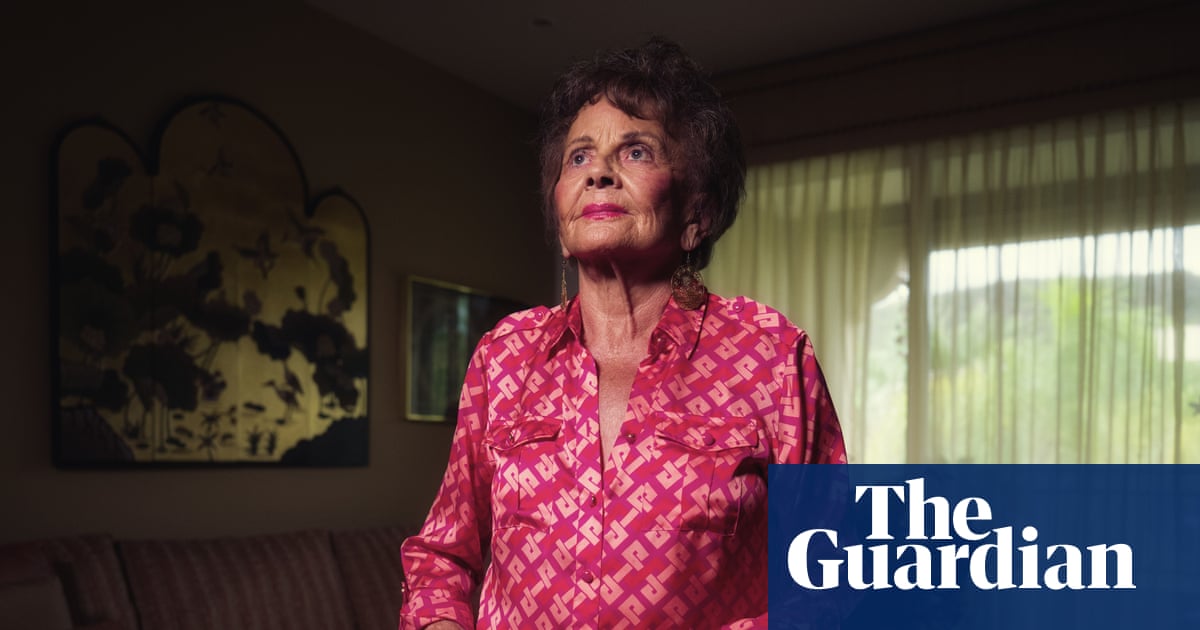What began with a large bamboo ring wrapped in brown paper and posted across the Pacific to an Australian war bride in the US launched what became one of the world’s greatest fads of the late-1950s – the hula hoop.
But Joan Anderson, the parcel’s recipient and the woman who delivered the concept of the hoop to America, was left out of the loop – ignored by the toy company that sold more than 100m hula hoops before the fad was replaced.
It was not until 2018 that Anderson, who died on 14 July aged 101, was credited for her role in introducing the hula hoop after her story was shared in the short documentary film Hula Girl.
The film provided Anderson the opportunity to tell her side of a story that involved the thrill of innovation quickly followed by the ache of betrayal and the worth of a “gentleman’s handshake”.
In 1956, while on a return visit to her home town of Sydney, Anderson noticed how many people were having fun with large bamboo hoops, wriggling them around their waists and shimmying their hips like Elvis Presley.
“Everywhere I would go, everybody was giggling and carrying on and when I asked what was going on they said, ‘Oh, everyone’s doing the hoop,’” she said.
The joy was contagious, and upon her return to the US where she was living, she told her husband, Wayne, about it. He wanted to see one of these hoops, so Anderson’s mother posted one over, and during a dinner party demonstration of the hoop, after a guest compared Anderson’s moves to those of a hula dancer, the name hula hoop was born.
“There are so many stories about where the name came from, and they are all fictitious,” Anderson said in the film. “This is the true story about it.”
Realising its potential as a toy product, the Andersons contacted an associate of Wayne’s named Arthur “Spud” Melin, the founder of the Wham-O toy company, whose instincts they trusted. They met in the company’s parking lot.
“There were no witnesses; just Spud, my husband and myself,” Anderson recalled. “We told him we’ve called it the hula hoop, and he thought that was a great name for it.”
Melin was intrigued and, as he and Wayne shook hands, he assured the Andersons that if the hula hoop made money for him, it would make money for them too.
By 1958, as the popularity of the hoops – now patented, plastic and produced by Wham-O – escalated and, with sales exceeding US$30m in two months, the Andersons’ phone calls remained unanswered, messages not returned.
The only credit given to Joan Anderson was as the “friend from Australia” who had inspired Melin.
“I think that bugged me more than anything,” Anderson said. “I was not a ‘friend’.”
Joan Constance Manning was born in Sydney on 28 December 1923 to Claude and Ethel Manning. After leaving school at 14, she began modelling, with ambitions to become a film star. She was a diminutive figure, just over five feet tall, and was nicknamed the Pocket Venus.
In December 1941, Joan was the cover girl of Pix magazine and was declared to be “a typical Australian holiday girl” whose war work included knitting socks and writing letters. She received a picture of herself from troops at Tobruk who wrote, “you make us forget Libya”.
While swimming at Bondi beach in 1945, Joan was approached by US Army Air corps P-38 pilot Wayne Anderson, who did not make an impression until she saw him that night at a dance in his uniform. Four months later, they were married and, in early 1946, she joined hundreds of other war brides on their journey to America.
In 1961, the Andersons filed a lawsuit against the Wham-O toy company and eventually settled with a small amount of compensation.
“Why be angry with something you can’t change? The world isn’t fair but life goes on. I had a great life,” Joan Anderson said. “My husband lived to be 87 and we had 63 wonderful years together. Happiness is the best revenge.”
She and Wayne had four children: Warren, Gary, Carl and Loralyn, three of whom survive her. Wayne died in 2007. Despite the hula hoop disappointment, the Anderson children all had hoops as they grew up.
“It was never a big deal in our family. [My parents] went on with their lives. They knew they messed up with the business deal,” Loralyn Willis said.
Somalian Australian circus artist Marawa, an inductee of the Guinness World Record Hall of Fame for her hooping prowess, met Anderson in 2018 and was struck by her grace over her lost business opportunity.
“If I can be like Joan when I am 100 then I’ll be happy,” she said. “Meeting her made me realise I’ve made the right career choice for a long life.”
Willis said her mother was “fun-loving, adventurous and willing to try anything”. She was ziplining, parasailing and boogie-boarding with her grandchildren until her mid-90s.
“Mom was pretty happy that she got the recognition in the end and that she was able to bring so much joy to people around the world,” she said. “How can you hula hoop without being happy?”
